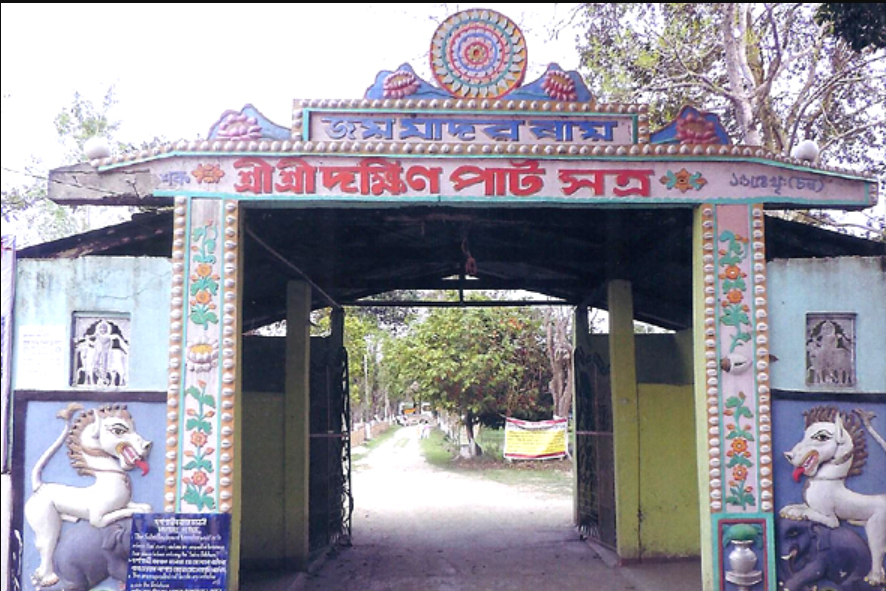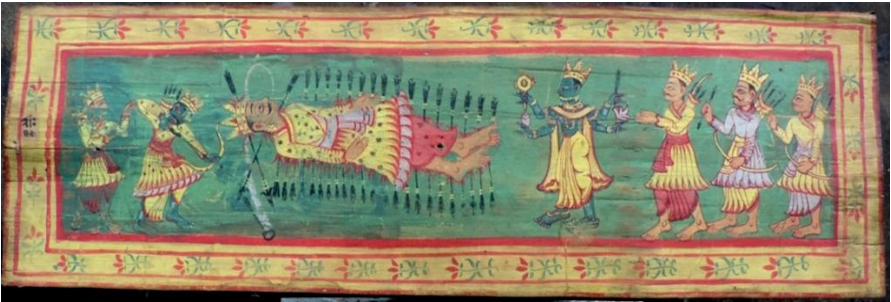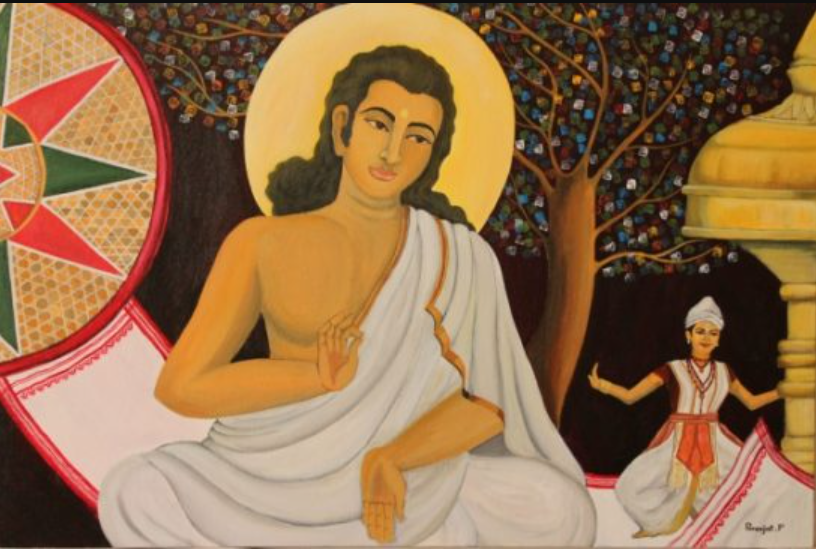Introduction
India’s cultural and spiritual heritage is woven with threads of diverse traditions and profound philosophies that have evolved over centuries. Among these, Vaishnavism stands as evidence of the lasting power of devotion and the pursuit of spiritual enlightenment. Originating in ancient times, Vaishnavism’s roots delve deep into the religious landscape of India. Within this intricacy, the region of Assam emerges as an interesting canvas where the vibrant brushstrokes of Neo-Vaishnavism have left an indelible mark, transforming not only the religious fabric but also the artistic and social dimensions of this northeastern realm. In the midst of socio-political upheaval and cultural diversity, the figure of Srimanta Sankaradeva emerges as a guiding light, steering the course of Neo-Vaishnavism and its influence on the Assam School of Manuscript Painting. This essay embarks on a journey through time, delving into the interplay between religious reform, artistic expression, and social harmony, as the Neo-Vaishnavite movement weaves its story of influence upon the vibrant canvas of Assam’s cultural and artistic heritage.
Neo-Vaishnavism and Emergence of the Satra Institutions
During the fifteenth century, Assam, a region in northeastern India, was undergoing socio-political turmoil. The kingdom of Assam was in a state of disintegration, with various dynasties and kingdoms rising and falling. The invasion of the Ahoms from China-Tai further added to the instability in the region. Assam was also characterized by a diverse cultural landscape, with different tribes and religious practices, including Saktism, which involved animal and human sacrifices.
In this turbulent context, Srimanta Sankaradeva, a key figure in the development of Neo-Vaishnavism, emerged as a religious reformer. Born into a prominent Bhuyan family, Sankaradeva received education in Sanskrit lore and embarked on a transformative pilgrimage throughout India. During his travels, he was drawn to the Vaishnavite faith and became a devoted follower.
To facilitate the practice and propagation of Neo-Vaishnavism, Sankaradeva established the Satra institution, which served as a center for religious and cultural activities. Satras became spiritual and cultural hubs where devotees gathered for meetings, discourses, and performances. They played a crucial role in preserving and promoting the principles and practices of Neo-Vaishnavism in Assam.
Sankaradeva’s legacy extends beyond religious reforms. He also played a significant role in the cultural renaissance of Assam. His teachings inspired a flourishing of music, dance, and painting. Sankaradeva’s emphasis on universal love, equality, and compassion fostered social harmony and rejected discrimination towards followers of other religions.

The Satra institution, initially consisting of religious gatherings under the open sky or large trees, evolved over time. It became more structured with the establishment of Namghars or Kirtanghars, which served as permanent places for religious activities. The Satras relied on Guru-kar, a direct tax or fee given to the Guru, and Sidha-bhojani, indirect contributions made by disciples, as their sources of income.
The Neo-Vaishnavite movement and the Satra institution played a significant role in unifying Assamese society. The movement harmonized diverse religious beliefs, transforming Assam into a predominantly Vaishnavite region. Bhaona, a form of traditional dramatic performance introduced by Sankaradeva, became an integral part of the religious publicity, with performances continuing to this day. The Assam School of manuscript painting, influenced by Sankaradeva’s teachings and the rise of the bhakti movement, added to the cultural vibrancy of the region.
Introduction to the Assam School of Manuscript Painting
The Assam School of painting, often overlooked in discussions of Indian painting, holds a unique place in the country’s artistic traditions. Painting in Assam evolved in the context of manuscript illustration, focusing on line and color. While historical references to painting in Assam can be found as early as the 7th century CE, the flourishing period began in the 16th century with the rise of the neo-Vaishnavite movement.

The Khanikars, skilled artisans and artists, were instrumental in the Assam School of painting. They were supported by the Satras and also served as makeup artists during Bhaonas, deepening their understanding of colors used in paintings. The Court Style or Royal Style emerged during the Ahom rule in Assam and was influenced by the Mughal style of pictorial art. Another style known as the Darrang style developed in the 18th century and was patronized by the Darrang court. The Tai-Ahom style, influenced by Buddhist art from Upper Burma, also had an impact on the Assam School.
Conclusion
The intricate interplay of Neo-Vaishnavism, spearheaded by Srimanta Sankaradeva, and the Assam School of Manuscript Painting has indelibly shaped the cultural and artistic heritage of Assam. Through the establishment of Satra institutions, Sankaradeva’s movement not only propagated spiritual values but also nurtured a fertile ground for artistic expression and social harmony. The Assam School of Manuscript Painting, infused with the ethos of Neo-Vaishnavism, stands as a proof to this synergy, showcasing a unique fusion of local and diverse artistic styles. Together, these intertwined narratives bear witness to the power of devotion, enlightenment, and creativity, casting a vibrant light on Assam’s cultural and spiritual journey.
Feature Image: Srimanta Sankardeva. Courtesy: Infinity
Love, Romance, and Portrayal of Women in Indian Miniature Paintings
Contributor





